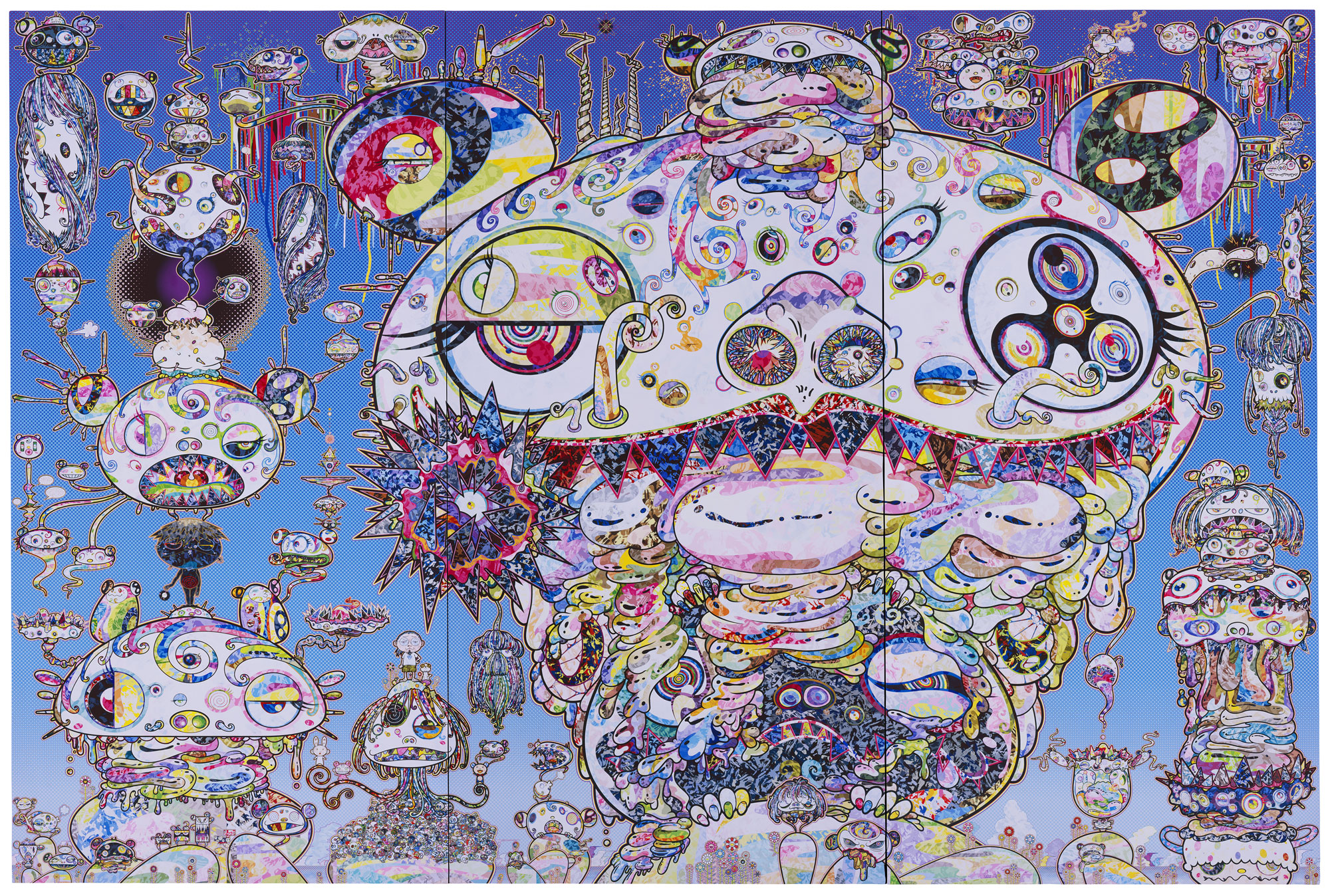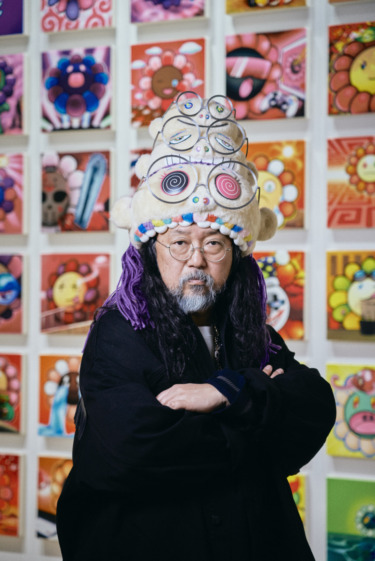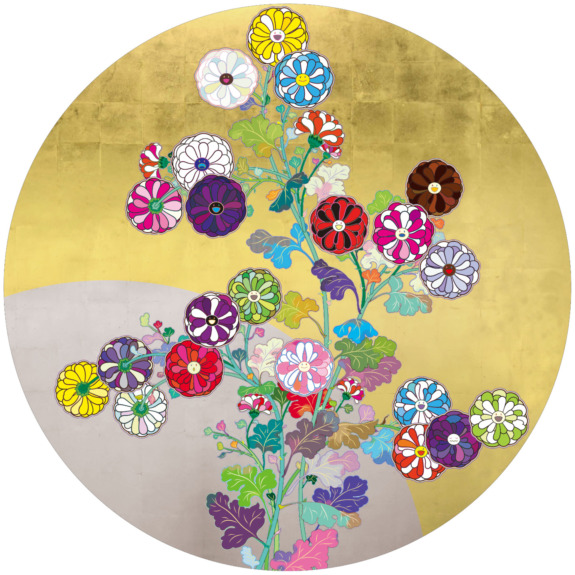Discover Takashi Murakami’s New Exhibition at Cleveland Museum of Art
The Japanese artist’s in-depth survey started at The Broad in 2022; in Cleveland, the main attraction is an interoperation of a temple in central Japan

The first of half of 2025 has been another prominent chapter for Takashi Murakami. After collaborating with the L.A. Dodgers for their Major Baseball League jerseys and releasing the third edition of his cherry motif handbags with Louis Vuitton, the artist’s instantly recognizable whimsically twisted universe of anime figures lands midwest with his solo exhibition at Cleveland Museum of Art. Titled “Stepping on the Tail of a Rainbow,” the expansive outing’s content dates as far back as 1993 with a yellow DOB t-shirt designed by the Japanese maestro.
Organized by The Broad museum’s curator Ed Schad, the show in fact started at the Los Angeles institution in 2022 and features work mainly from its collection. The scene-stealer of the expanded Cleveland edition is a re-interpretation of the Yumedono (or Dream Hall in English) from the Hōryūji Temple complex. Murakami worked with the set builders of the popular FX show Shōgun to build the ambitious steel, aluminum, wood, and plaster hut in the museum’s Ames Family Atrium. “When I realized that Shōgun was produced by Americans, I was impressed by their understanding of the Japanese culture and history,” Murakami tells Galerie. Another revelation found the artist when he saw the size of the Cleveland museum and its expansive collection of historical art. “I realized that I needed to offer more to the local audience,” he adds. After Murakami became a fan of the TV show, he decided to extend the show’s initial iteration with this ambitious undertaking in addition to around hundred paintings and sculptures.

The holy temple, which is today located in Nara, is believed to be the former site of Prince Shōtoku Taishi’s home. In the late 500s, he was instrumental in Buddhism’s formal acceptance in Japan by convincing his father Emperor Yōmei about Buddha’s healing powers. In Murakami’s interpretation, the temple—which reaches around 32 feet in height—is both a spiritual site and a gallery where four new paintings are on display, as well as carpet flooring designed by himself.

Echoing the temple’s emphasis on transcendence and healing, the show aims to underline the often times veiled themes in the wildly famous artist’s oeuvre. In fact, the show invites the audiences to contemplate on recent catastrophes, such as the Fukushima disaster, the Tōhoku earthquake and tsunami, and the recent pandemic. “The sheen and the colors are there to make the work instantly accessible,” Emily Liebert, the museum’s contemporary art curator tells Galerie. She, however, also believes there is more to explore for those “who stay longer and read the labels for a sustained engagement with Murakami’s imagery.” The power of the artist’s contagiously joyful and uplifting work in fact hails from his particular way of addressing trauma through an emphasis on collectivity. The artist’s signature smiling faces and bright colors function as portals to explore both historical and personal journeys for each pair of eyes. The show’s titular painting is a tour-de-force on Murakami’s multifaceted energy with its 32 feet by 82 feet scale and a kinetic sweep of figures and colors in a kaleidoscopic boldness. “He responds to disasters with a visual outpouring of energy,” adds Liebert.
The show also delights with the inclusion of Murakami’s most recent output, such as last year’s acrylic and gold leaf diptych, titled Karajishi-zu Byōbu. Spanning the painting’s 14 feet width is a sprawling landscape of lions depicted with a empirical glory. The artist says the recent work is a chance to “revisit” his debut as a young artist with themes that emulate from traditional Japanese painting. Cleveland Museum of Art offers a suiting backdrop for the artist’s new ventures with its collections of around 4,000 objects from modern and ancient Japan.
Despite the ceaseless institutional demand and popularity among a growing fan base, Murakami maintains a humble outlook towards the future: “When I receive a chance to show my work, I earnestly respond to it, and that is how I have been operating to do my best.”
“Takashi Murakami: Stepping on the Tail of a Rainbow” is open at Cleveland Museum of Art through September 7, 2025.


